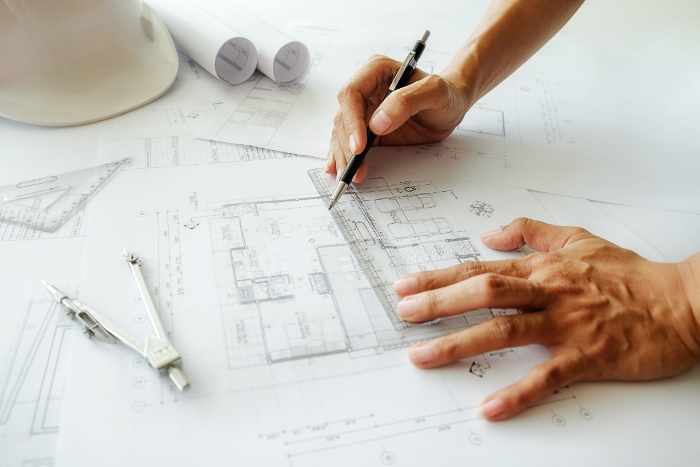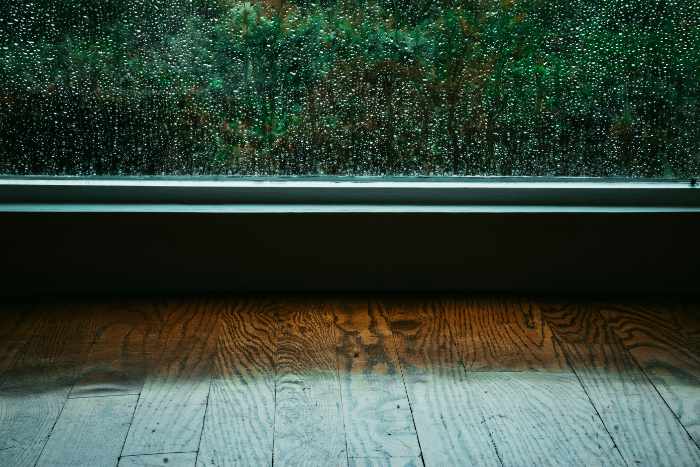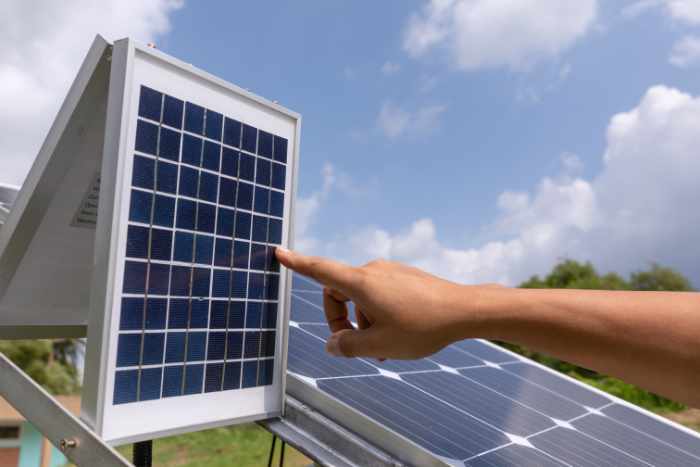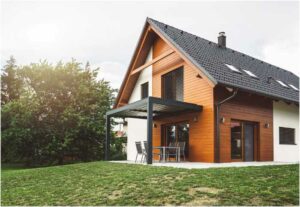Whether you’re a seasoned renovator or just starting your first project, we hope this guide will inspire you to make choices that are not only good for your home but also for our planet. In this article, we’ve created a guide to sustainable home improvements that will help you renovate your home responsibly. Let’s begin.

Guide to Sustainable Home Improvements
Eco-conscious home renovations go beyond aesthetics. They create a positive ripple effect, benefiting your wallet, your health, and the planet. Here’s how:
Create a Healthier Home Environment
Eco-conscious renovations prioritize healthy indoor air quality by using non-toxic materials and improving ventilation. This can lead to improved respiratory health, better sleep, and overall well-being for you and your family.
Financial Savings and Environmental Impact Reduction
Lower your utility bills and shrink your carbon footprint by choosing energy-efficient appliances and improving your home’s insulation.
Consider adding solar panels for long-term savings and a cleaner future. Additionally, government incentives can help offset these costs.
Check with your local government for available programs, such as tax credits, rebates, and grants. For example, installing solar panels might qualify you for the Federal Solar Tax Credit in the U.S., and many utility companies offer rebates for energy-efficient appliances.
Minimizing Waste and Using Reclaimed Materials
Responsible renovation means finding new life for old items. Donate or sell usable materials during demolition, and recycle construction debris whenever possible. Careful planning beforehand can further minimize waste generation.
For instance, consider using reclaimed wood for flooring or accents, and look for vintage fixtures to incorporate into your home.
These choices not only reduce waste but also add unique character to your space.
| Expert Tips: Conduct an energy audit before starting your renovation. This will identify areas where your home is losing energy and provide a roadmap for the most effective improvements. Many utility companies offer free or discounted energy audits. |
Examples of Eco-Friendly Materials for Renovation

To start our guide to sustainable home improvements, we must look at materials. More and more buyers are targeting eco-friendly homes in their property search. When it comes to eco-friendly home improvement, there is a wealth of options available to suit your needs and budget. Here are some key areas to consider:
- Flooring: Swap out traditional vinyl for sustainable choices like cork, bamboo, reclaimed wood, or even recycled rubber. These options are not only durable but also beautiful additions to your home.
- Building Materials: Consider using recycled steel for beams or frames. It’s incredibly strong, reduces environmental impact, and is readily available. For insulation, compressed straw bales are a great eco-friendly alternative.
- Countertops: Skip stone or laminate and opt for recycled glass or paper composite countertops. These offer a stylish look while minimizing your environmental footprint.
You can also explore energy-efficient options like low-flow faucets and showerheads or Energy Star-rated appliances to further reduce your environmental impact. Remember, even small changes can make a big difference.
Power Up Your Renovation with Renewables

Incorporating renewable energy sources into your home renovation is a key factor in our guide to sustainable home improvements. It’s a fantastic way to reduce your carbon footprint and save on energy costs. Here’s how you can do it:
Solar Panels
Solar panels are one of the most popular renewable energy sources for homes. They can be installed on your roof or in your yard, and they convert sunlight into electricity. You can use this electricity to power your home, reducing your reliance on the grid and potentially saving you money.
Wind Turbines
If you live in an area with consistent wind, small wind turbines can be a great option. These turbines convert wind energy into electricity. While they’re not suitable for all properties, they can be a fantastic renewable energy source for those with the right conditions.
Geothermal Systems
Geothermal systems use the stable temperature of the earth below the surface to heat and cool your home. While the installation process is more involved and the upfront costs can be higher, a geothermal system can provide significant savings over time.
Solar Water Heaters
Solar water heaters use the sun’s energy to heat water for your home, offering a cost-effective way to harness solar power without committing to full solar panels.
Additionally, homeowners can conserve water and save on utility bills by installing water-saving fixtures during renovations.
| Fixture | Features |
| Low-Flow Showerheads | Use less water than traditional showerheads while maintaining the same water pressure. Some models have adjustable settings for a customized shower experience. |
| Dual-Flush Toilets | Allow you to use less water for liquid waste and more for solid waste, resulting in substantial water savings over time. |
| Water-Efficient Faucets | Faucets with the WaterSense label use a maximum of 1.5 gallons per minute, saving 30% more water than standard faucets. |
| Tankless Water Heaters | Heat only the water you use, rather than maintaining a large tank of hot water, saving significant amounts of water. |
| Rainwater Harvesting Systems | Collect rainwater for use in tasks like watering gardens or flushing toilets, providing a sustainable water source. |
Hiring Eco-Friendly Contractors

No guide to sustainable home improvements would be complete without including the labor. Building green starts with the team you assemble. Here’s how to find contractors who share your commitment to sustainability:
Research Green Businesses
Look for local contractors who emphasize eco-friendly practices on their websites. Check if they source materials from sustainable suppliers and prioritize recycled or recyclable products.
Look for certifications like LEED (Leadership in Energy and Environmental Design) or inquire about their membership in green building associations.
| Trivia: The first LEED-certified home was built in 2006 in Portland, Oregon. LEED (Leadership in Energy and Environmental Design) certification is a globally recognized symbol of sustainability achievement and leadership in green building. |
Interview Questions
During consultations, ask pointed questions about their approach to sustainability. Inquire about their experience with past eco-friendly projects, their preferred materials and disposal methods for construction waste, and their use of renewable energy sources for powering equipment.
Certifications and References
Don’t just listen for green buzzwords. Ask for proof of certifications for the contractor and any subcontractors they plan to involve. Request references from past clients who prioritized sustainable practices in their projects.
Be upfront about your desire for an eco-friendly renovation and be open to suggestions from your contractor. They may have ideas for reclaimed materials or innovative techniques that you hadn’t considered.
Protecting Local Ecosystems and Wildlife
When planning a home renovation, it’s important to consider the potential impact on local wildlife and ecosystems. Understand the local ecosystem, plan around nesting seasons, use eco-friendly materials, and minimize noise and light pollution.
Hiring eco-conscious contractors and planting native species can further protect local wildlife.
Additionally, consulting with a pest management professional can help ensure that any pest control measures taken during the renovation are environmentally friendly and do not harm local wildlife.
Conclusion
We hope you have enjoyed our guide to sustainable home improvements. Renovating responsibly is about making choices that are not only good for your home but also for the environment.
Remember, every little bit helps, and even small changes can make a big difference. Whether you’re just starting or you’re a seasoned renovator, we hope this guide has given you valuable insights and ideas for your next eco-conscious home improvement project. Happy renovating!



